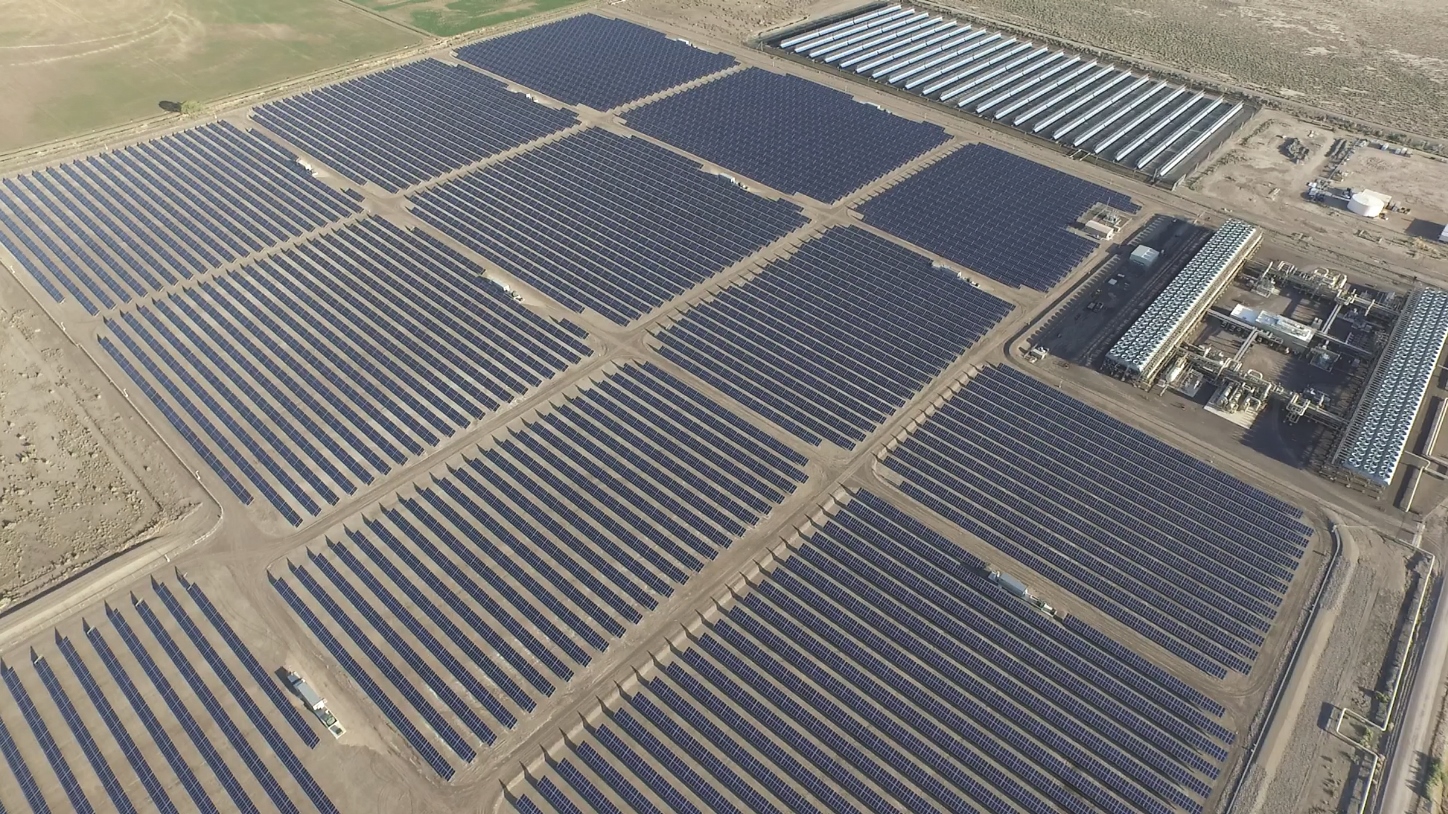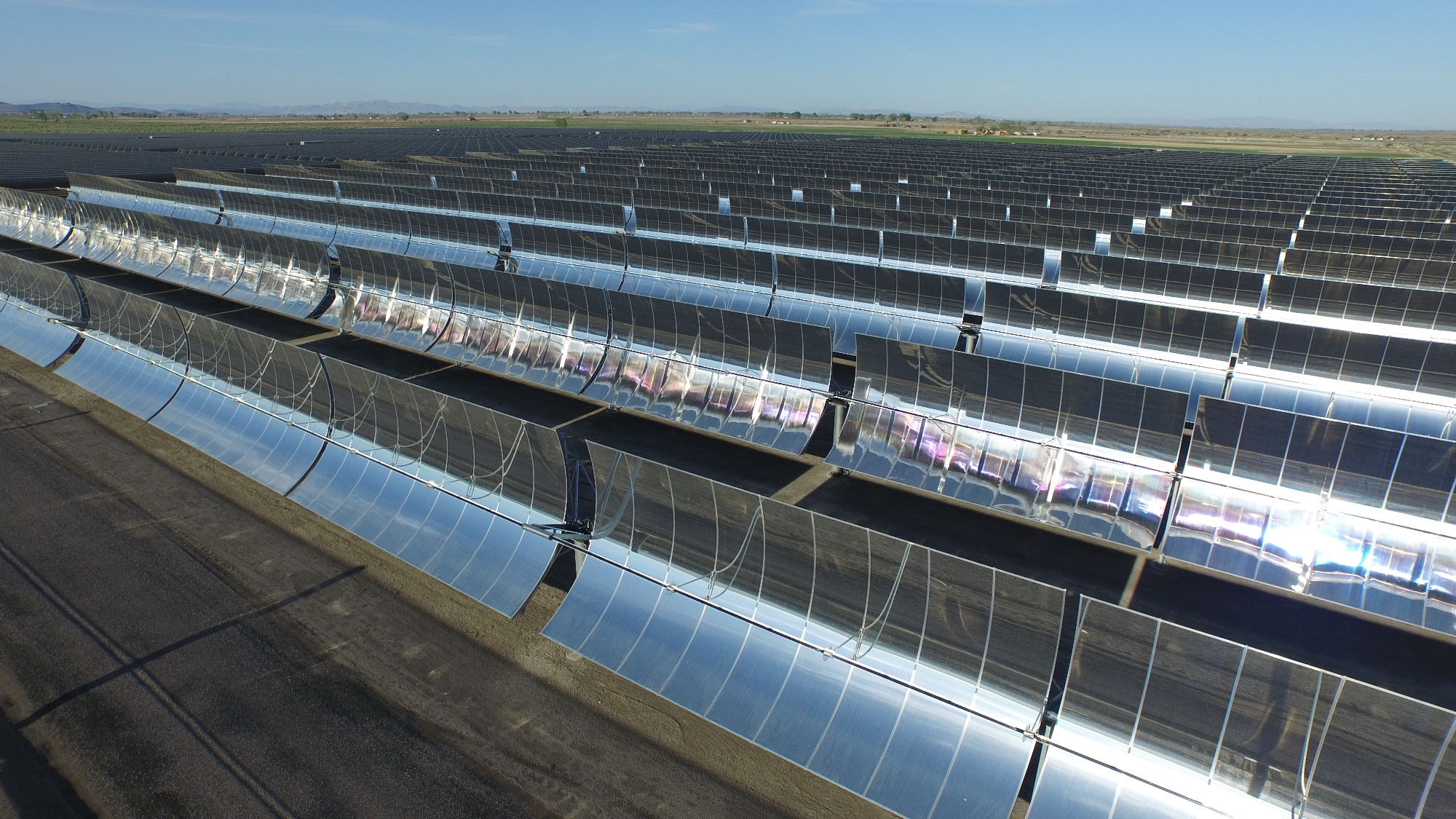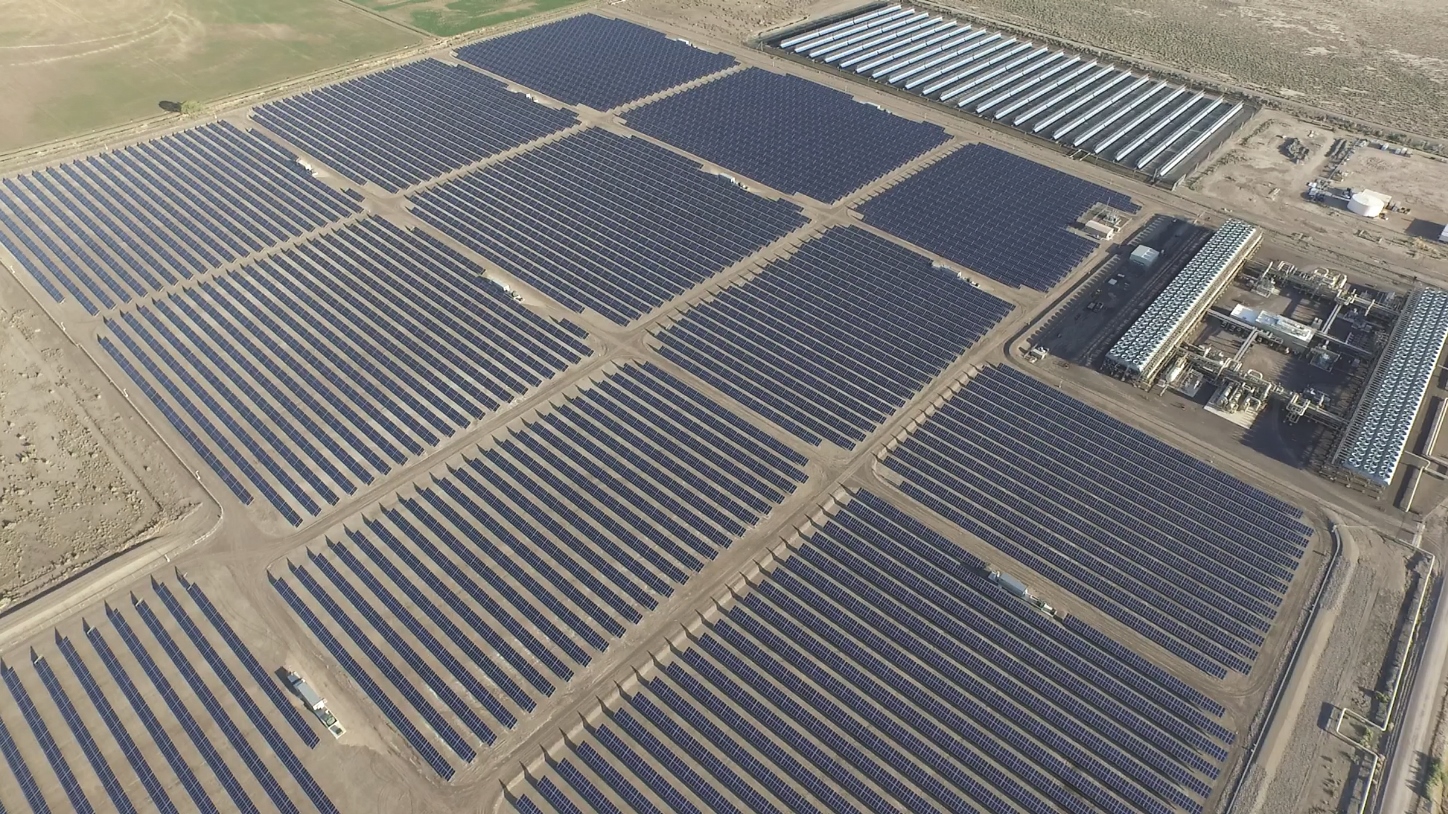Champagne and strawberries, chocolate and peanut butter, geothermal and solar energy – some things just go nicely together, as engineers at Enel Green Power North America’s Stillwater plant could readily attest. Built in the Nevada desert outside the town of Fallon, Stillwater came online in 2009 as a conventional geothermal plant; having since added two more types of renewable energy to the mix, it’s now the world’s first triple hybrid renewable energy plant.
In March 2016, Enel Green Power North America (EGP-NA) announced that the third component, concentrating solar power, had come online. Its integration with the geothermal plant is being analyzed with the help of the U.S. Department of Energy’s Idaho National Laboratory and National Renewable Energy Laboratory.
Just as renewable energy sources like wind and solar experience fluctuations in power output, so too does geothermal energy – a perhaps surprising fact given that geothermal energy draws upon the ever-present heat of the deep earth as an energy source rather than anything so variable as wind or cyclical as daylight. The key to geothermal fluctuations lies in the system’s difficulty discarding heat on hot summer days.
A quick primer: The geothermal module of the Stillwater plant pumps up geothermal brine — piping hot water found deep underground — where its heat is transferred to a second fluid, isobutane, which flash-boils and spins turbines as it expands. Having imparted its heat energy, the brine is returned back into the earth while the isobutane is cooled and condensed back into a liquid, ready for another boil-and-expand cycle.

Because the Stillwater plant relies on the ambient air to cool and condense the isobutane, its cooling system struggles to shed excess heat on hot days, decreasing the plant’s performance as a result. Unable to turn down the thermostat on the ambient air, EGP-NA engineers, therefore, turned up the temperature of the incoming geothermal brine using a technology called concentrating solar power, or CSP. When Enel Green Power North America approached DOE’s Geothermal Technologies Office to identify collaborative opportunities for optimizing this hybrid technology, DOE put the company in touch with engineers from INL and NREL.
“NREL has CSP analysis and characterization capabilities, and INL has geothermal power plant simulation and optimization expertise,” said Dan Wendt, the INL engineer who led the project’s analysis. “It was the ideal mix of resources and skills necessary for the analysis.”
While high-tech in its execution, the concept behind CSP is fundamentally as simple as a domestic solar cooker, but rather than roasting hot dogs, rows of parabolic mirrors, instead, focus the sun’s rays onto tubes of demineralized water. The heat from this water, now measuring several hundred degrees, is transferred to the incoming geothermal brine, increasing the amount of energy available to boil the isobutane, resulting in more power to spin the electricity-producing turbines. And the plant’s use of air as a cooling medium, rather than water, is an increasingly desirable attribute as water shortages intensify throughout the western U.S.
Access to Enel Green Power North America’s concentrating solar field and geothermal power plant data and specifications gave NREL and INL engineers “something of a technological playground to work in,” said Wendt. “It can often be difficult to obtain commercial power plant operating data for model validation purposes but the partnership gave us the chance to analyze detailed operating data from a state-of-the-art power plant with a unique configuration.”

The research done at Stillwater represented the first time empirical data from a commercial hybrid plant validated a theoretical hybrid model. The research findings, gathered between March and December 2015, confirmed that the combination of a 2-megawatt (MW) solar thermal facility with a 33.1-MW geothermal plant increased overall output at Stillwater by 3.6 percent compared with production from geothermal only.
In addition to the concentrating solar power, the Stillwater plant also draws upon the power of sun to generate electricity directly. There are 240 acres of adjacent solar photovoltaic panels that work in tandem with the geothermal system, each gaining strength just as the other falters. The sunniest part of the day, when the geothermal system’s output dips, is precisely when the solar cells shine. Likewise, the geothermal energy output strengthens throughout the cool desert night when the solar cells aren’t producing a single watt.
The power plant is extremely environmentally friendly, generating enough electricity to power some 15,000 U.S. households without producing carbon dioxide or other emissions associated with fossil fuel power production methods. “It’s really an ideal technology with respect to emissions,” said Wendt. “I’d say it gets an A-plus for the environmental aspects.”
With its three renewable energy sources working together, Stillwater seems to have a winning combination in place. In addition to being the first solar-geothermal hybrid power plant in the world, it has received accolades such as Top Plant from Power Magazine and multiple awards for technology advancement and environmental stewardship from the Geothermal Energy Association.
Wendt says the question now is how to make the next generation perform even better. To that end, he continues to investigate different control strategies and power plant designs, noting that minor tweaks to efficiencies throughout a system can add up to big and potentially game-changing improvements.
While an unabashed fan of the hybrid energy system that powers Stillwater, Wendt noted that on a per megawatt basis, its physical footprint is relatively large. “It’s got big air-coolers and big solar fields,” he said. But for a power plant that satisfies the electrical demands of thousands while emitting little more than hot air, it seems a fair trade-off.
Videos about the project:





